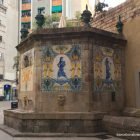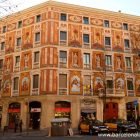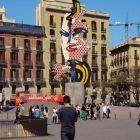According to legend, Barcelona was founded by the Greek God Heracles, who, together with his brother Hermes, accompanied Jason and the Argonauts, searching for the Golden Fleece.
The brothers set sail with a fleet of nine ships, one of which was lost in a storm somewhere in the Mediterranean. After days of searching for the lost boat, it was finally found moored near Montjuïc, a hill to the south of Barcelona.
Apparently, Heracles and Hermes liked the area so much that they decided to build a new city called Barca Nona (the ninth ship).
If the legend were true, then Barcelona would pre-date Ancient Rome by approximately four and a half centuries. In fact, the story is normally attributed to a thirteenth-century Bishop called Rodrigo Jimenez de Rada, who apparently thought that the true origins of Barcelona were too mundane.
Over the centuries, the myth has caught the imagination of Barcelona residents and statues of both Heracles (generally referred to by the Roman name Hercules) and Hermes can be found throughout the city.
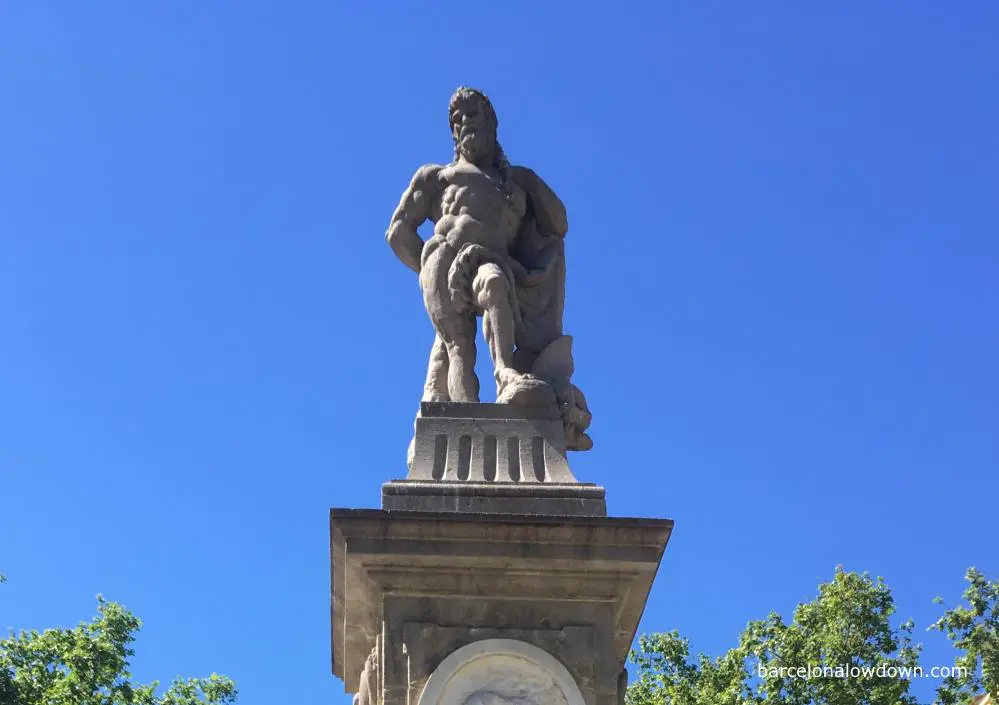
Hercules or Heracles?
Greek mythology is part of an oral tradition that dates to the Bronze age, from 3200 to 600 BC. The myths centre around a pantheon of 12 Olympian deities who ruled mankind and shaped life on Earth.
They also tell the stories of human heroes, including Midas, Pandora, Narcissus and Heracles, son of Zeus and Alcmene.
When Heracles’ brother Eurystheus became king, he assigned Heracles twelve labours ranging from cleaning the stables of King Augeas to capturing or slaying beasts and monsters, including the three-headed dog Cerberus which guarded the gates to the underworld.
Ancient Rome adopted many Greek gods and heroes, giving them new names and maintaining many of their original characteristics and legends.
Hercules is the Roman equivalent of Heracles, and the heroic deeds attributed to him are more or less identical to those of his Greek counterpart. Just like Heracles, Hercules was a mighty adventurer, champion of the weak, and the protector of humankind.
Monuments to Hercules in Barcelona
As you travel around Barcelona, you’ll come across hundreds of reminders of the city’s legendary founding fathers. From large and impressive statues to tiny carved motifs, the mythical brothers pop up almost everywhere, although it must be said that it’s Hermes who appears most often, mainly due to the fact that he is the god of commerce and merchants.
There are two monumental fountains dedicated to Hercules in Barcelona. The first, and more imposing of the two, is located in the elegant Eixample district and dates back to the late eighteenth century. The other Hercules fountain, which is almost a century newer, is in the gardens of the Royal Palace of Pedralbes and was created by none other than Antoni Gaudí.
The Hercules fountain on Passeig de Sant Joan
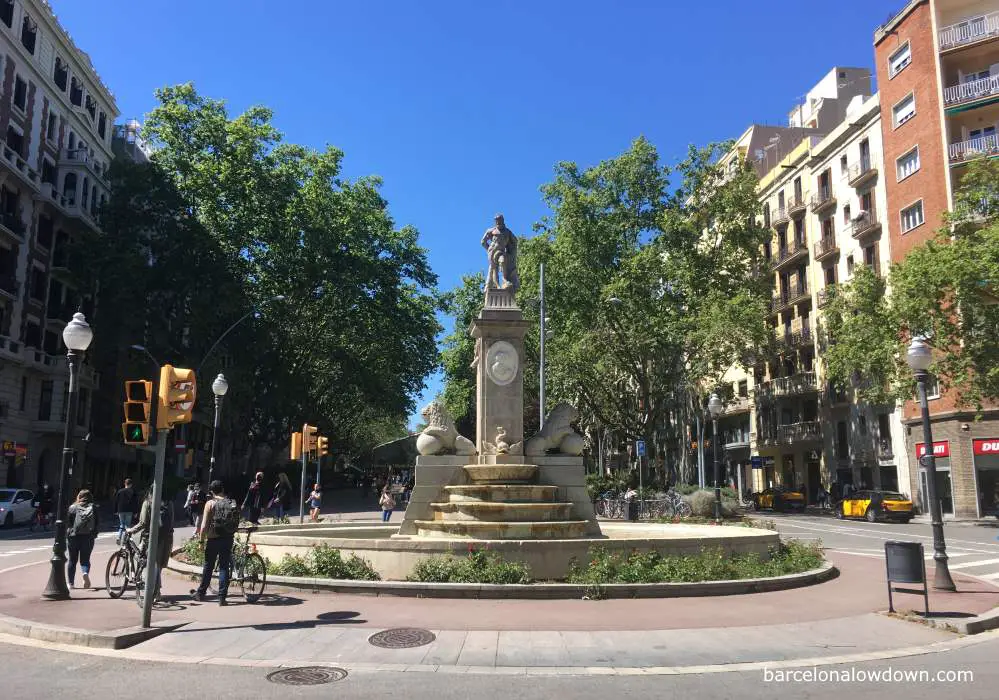
The Hercules Fountain (Catalan: Font d’Hèrcules) on Passeig de Sant Joan was originally part of a collection of four fountains that were built to decorate a tree-lined esplanade that separated the eighteenth-century citadel from the old city (now a public park).
Each of the four fountains was dedicated to a character from Greek Mythology. The other fountains were dedicated to Phorcys, Arethusa and the Nereids. The Hercules fountain is the only fountain that has survived the passage of time and is the oldest public monument in Barcelona.
The monument took five years to build and is topped by an impressive statue of Hercules by Salvador Gurri. Hercules is portrayed naked except for a lion’s skin which is draped over his left shoulder. The skin represents the Nemean lion which Hercules slew as the first of his twelve labours.
The statue stands atop a rectangular column with two stone plaques. One of the plaques is the shield of Barcelona; the other bears a carving of King Charles IV of Spain and his wife Maria Luisa of Parma, who inaugurated the fountain in 1802. At the base of the column sit three lions and a mythical fish that spouts water onto the four-tier fountain below.
Location
The fountain is located on Passeig de Sant Joan at the intersection with Carrer de Corsega in Barcelona’s Eixample neighbourhood.
How to get there
The nearest metro station is Verdaguer which is on lines L4 and L5 (yellow and blue lines).
Bus routes 114, 87, H8, and V9, stop nearby.
The Hercules Fountain in the gardens of the Royal Palace of Pedralbes
https://youtu.be/4NNR8BbDE44
Antoni Gaudí designed the other Hercules fountain in Barcelona in 1884.
In 1862, wealthy businessman Eusebi Güell purchased two properties on the outskirts of Barcelona, where he built a luxurious Caribbean style palace surrounded by elegant gardens. Although Joan Martorell designed the house, it was Antoní Gaudi who was commissioned to create the gardens.
At the time Gaudí was in his so-called Orientalist phase and decided to create a garden inspired by the Garden of the Hesperides.
In Greek mythology, the goddess Hera planted an orchard with trees that bore golden apples. The garden was tended by three nymphs who were tasked with looking after the trees. However, Hera didn’t trust the nymphs, who sometimes picked the apples for themselves, so she also left an immortal dragon called Ladon to protect the garden.
The eleventh labour of Hercules was to steal the golden apples from the Garden of Hesperides, and in one corner of the garden, Gaudí built a small stone fountain which he dedicated to the Greek/Roman semi-god.
The fountain, which is tucked away in a small cluster of bamboo trees, consists of a semi-circular stone bench topped by a white bust of Hercules. Below the statue, water flows out of a narrow metal spout in the form of a Chinese dragon into a rectangular stone basin.
Said to be one of the least known works of the Catalan architectural genius, the fountain had fallen into disrepair and gone unnoticed until it was rediscovered in 1983.
Location
The fountain is located in the gardens of the Royal Palace of Pedralbes at Av. Diagonal, number 686.
How to get there
The nearest metro stop is Palau Reial on line L3 (green line).
Trams T1, T2 and T3 also stop near the entrance to the park, as does the Bus Turistic Hop On Hop Off bus (blue route).
Map
Parc de Pedralbes, Avinguda Diagonal, 686, Barcelona
Carrer de Còrsega, 436, Barcelona

